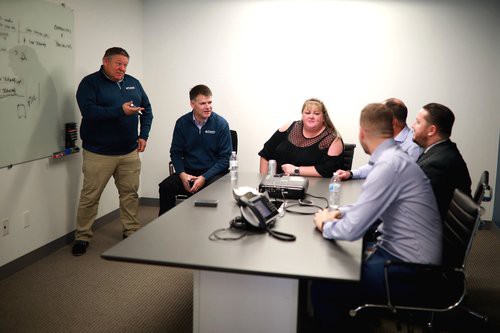 Vulnerabilities are endless — resources are not. Maintaining information from across your organisation and managing risks from internal and external sources is difficult. There are an endless number of risks, but only limited business continuity team resources. No matter what, the numbers don’t sound great.
Vulnerabilities are endless — resources are not. Maintaining information from across your organisation and managing risks from internal and external sources is difficult. There are an endless number of risks, but only limited business continuity team resources. No matter what, the numbers don’t sound great.
Knowledge must be consolidated to even scratch the surface of being in control of your programme. Most enterprise companies – especially as they grow and expand — work in some sort of a silod environment. IT doesn’t know what sales is doing – sales doesn’t know enough about product development and so on. Peoples’ knowledge is limited to what they do on a daily basis, fighting their own fires. If their work requires perusing additional knowledge, they might do so, but often, people don’t even know where to start.
That can lead to a myriad of problems. If there is little to no interdepartmental communication or knowledge, what will happen when disaster strikes? Every department for itself isn’t going to work. Coordinating teams that don’t really understand what’s important to others also doesn’t work in crisis. Continuity efforts will either elongate or fail if there is a complete lack of coordination.
In order to have a streamlined operation that is secure, it is imperative that all stakeholders have full knowledge of operations, so they can respond to any need across the organisation with confidence. Historically, information consolidation wasn’t possible, but now with technological advances and digital transformation, you no longer have to file everything away on paper documents that become outdated almost immediately. There is no excuse for not having an information foundation. Especially during a crisis or disaster.
An information foundation consolidates and centralises data, so all of your information is in one location. It should be accessible to everyone that needs it, all while being secure. This allows for data over documents and knowledge over plans. Instead of having a binder of outdated plans, you have all of the organisational knowledge you need for decision making.
Organisational knowledge isn’t new – it’s always been critical for businesses to understand potential threats and determine the most effective ways to address them and to recover should they occur. What has changed is our ability to organise, share, access, and delegate information. Everything people need to know about contingency plans and business continuity should be contained in a virtual one-stop shop where data is constantly updated, redundancies are eliminated, and roles are clearly defined.
A good information foundation provides you with the organisational knowledge you need to:
- Understand your business and its goals
- Proactively plan
- Adjust as things are constantly evolving
- Empower executives to empower you
- Break down silos
All of this enables wisdom and encourages collaboration. It makes interdepartmental communication easy. After that comes prioritization of the endless vulnerabilities. Proactive planning and a firm grasp on every piece of information needed makes for the best chance at a full recovery in the least amount of time possible. That’s why it’s important to possess something — probably a software solution — that pulls all of the necessary processes into that all-important information foundation. You can use your knowledge from the information foundation as power.
Because this information is so valuable, why let it stop with just being useful to the business continuity team and maybe the disaster recovery team? Once the knowledge base is assembled, organisations will find there are many ways to leverage this newfound asset, including:
- Mergers, acquisitions, and divestitures
- Investment banking
- Personnel decisions
- Vendor management
- Budgeting
- Procurement
- Risk Management
Power comes to individual practitioners who embrace and execute on building an information foundation for organisational knowledge. People who are in the know and can help others make better decisions are more valuable to their organisations. Really, there isn’t anyone at your company that doesn’t benefit from a complete information foundation. Again, the emphasis becomes on who will come to you for information rather than you going out and collecting scraps of data when it’s time to update your BIA and plans. Think of what you already collect — adding in more information is a small effort that pays off in incredibly big ways.
By consolidating information, using data for decision making, and breaking down silos, you’re able to gain control of your programme and go beyond to create a business continuity and risk management focused approach in your organisation.




